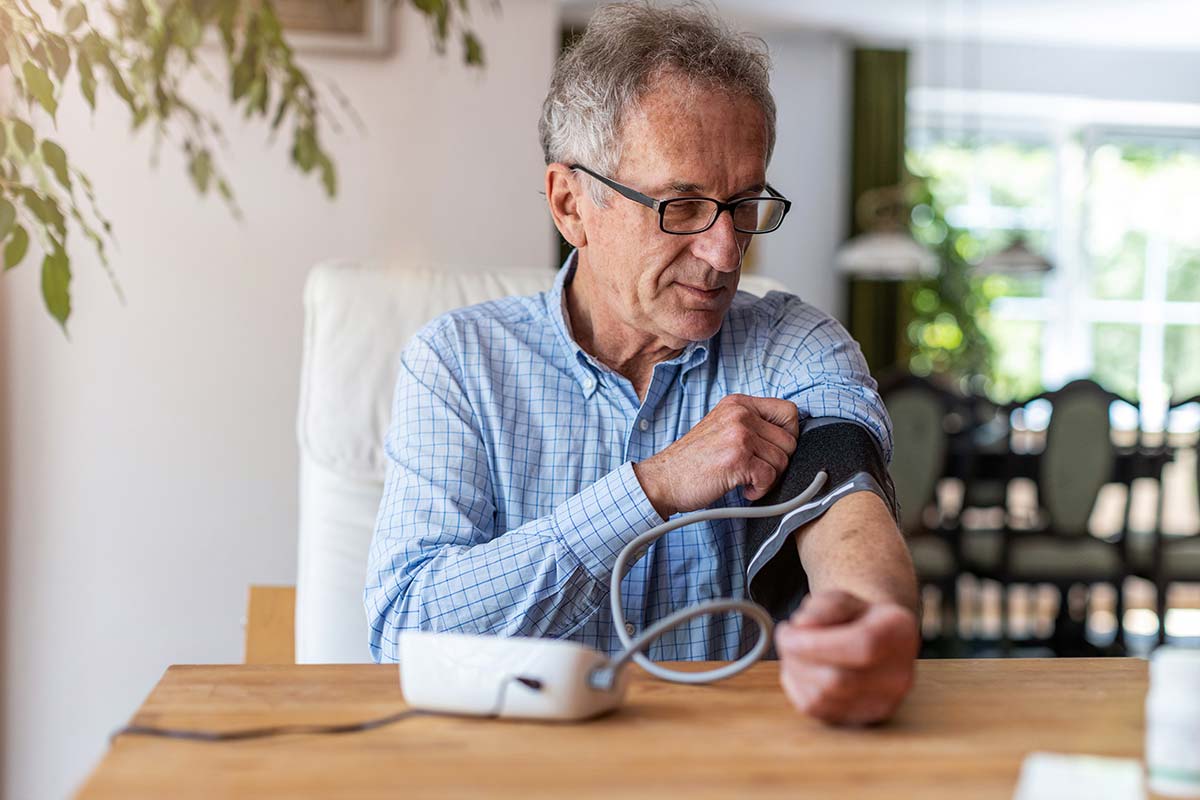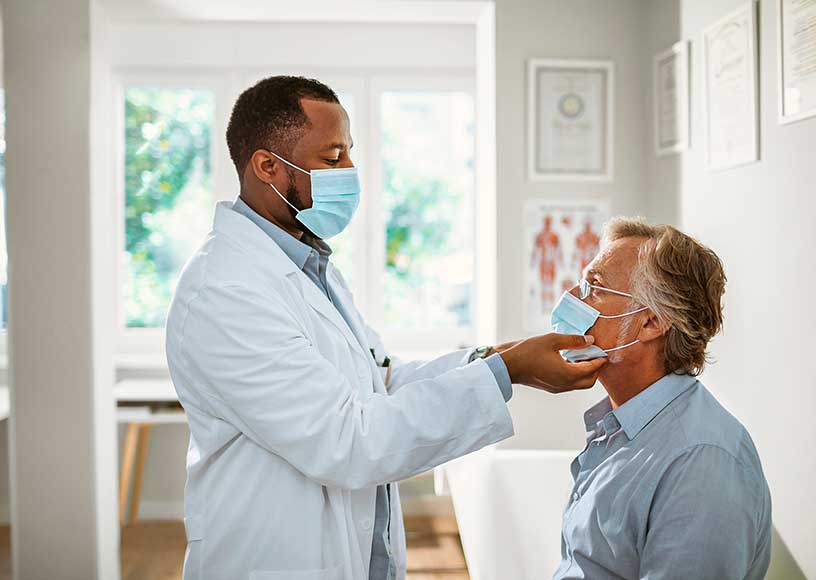4 subtle symptoms of high blood pressure

Almost half of all adults in the U.S. have high blood pressure.1 That number increases to 70% in those ages 65 and over,2 making it one of the most common chronic health conditions among this age group.3 One of the challenges is some people don’t know that they have high blood pressure.4
Why not? Well, people with high blood pressure may miss the early symptoms of the condition, or they may not have any symptoms at all.4 That’s why it’s important to have your blood pressure checked at least once a year.
Even with yearly checks, there may still be subtle signs that a person’s blood pressure is high or rising, notes Nieca Goldberg, M.D., medical director of Atria New York City. Knowing what those signs are means a person can see a provider as soon as they spot them in themselves or a loved one — and get blood pressure back in control. Here’s what to watch for.
Feeling exhausted all the time
High blood pressure can damage the arteries carrying blood from the heart. With high blood pressure, the heart must work harder than normal to get blood throughout the entire body, explains Dr. Goldberg.
When that happens, a person may feel more tired all the time. They may also be short of breath and not have as much endurance while exercising — or even when out and about running errands. “A lot of people just dismiss these signs as part of aging,” says Dr. Goldbert. “But they should always get checked, because they may have high blood pressure.”
Blood spots in the eyes
When one of the many tiny blood vessels in the eye bursts, it bleeds. It can look like a red spot in the eye. Blood spots in the eyes tend to be more common in people with high blood pressure or diabetes, according to the American Heart Association.5
It’s always a good idea to get those blood spots checked out by an eye doctor. High blood pressure can leave clues in the eyes and the many tiny veins in the retina and optic nerve.6 so along with regular checkups with your PCP, yearly eye exams may also help with early detection of high blood pressure.
Dizziness
Dizziness can be associated with high blood pressure and should not be ignored. And if dizziness comes on suddenly or is accompanied by trouble walking or keeping one’s balance, it could be a sign of a stroke.
Even if people don’t notice any symptoms of high blood pressure, it’s important to keep close tabs on blood pressure, stresses Dr. Goldberg. “High blood pressure is associated with an increased risk of heart attack, stroke, kidney disease and dementia,” she says.
How to manage high blood pressure
Normal blood pressure is less than 120/80, notes Dr. Goldberg. To know your numbers, get your blood pressure checked by your primary care provider at least once a year, during a yearly wellness visit, for example.
This is especially important for people over age 40, as well as for those who have other risk factors for hypertension.7
If a person’s blood pressure is higher than 130/80, a provider may suggest lifestyle changes, medication, or both.7
Your provider can suggest ways to help prevent or manage high blood pressure. Here are 5 common ways to manage high blood pressure.
Maintain a healthy diet
Certain diets may help manage or prevent high blood pressure, so talk to your provider about them. Dr. Goldberg recommends the Mediterranean diet or DASH diet. Both are low in sodium, saturated fat and processed foods — and high in fiber, healthy fats such as olive oil, and plant-based meals.
Stay active
Being physically active can help lower blood pressure.8 Talk to your PCP but in general, take a brisk walk or do some other type of exercise on most days a week, for at least 30 minutes.
Maintain a healthy weight8
Consult a PCP on what the healthiest weight for you is. Then discuss ways to change up diet and exercise more if you need to lose weight.
Avoid bad habits
Smoking or drinking too much alcohol are both risk factors for hypertension.8 Talk to your provider about ways to stop smoking or reduce your alcohol intake.
Know your numbers
Providers typically ask people to come in regularly for blood pressure checks if it’s higher than 120/80. But it’s also good to check it at home, notes Dr. Goldberg. “An office visit is just one point in time — it’s good to have a sense of what it is as you go about daily activities,” she says. To do it, she suggests this step-by-step method:
- Make sure your bladder is empty. Having to urinate can raise blood pressure.
- Put the blood pressure monitor on the table. Then sit on a chair next to the table — the goal is to be able to rest the arm with the blood pressure cuff on it on the table, so it’s elevated.
- Sit with both feet flat on the floor. Crossing the legs also elevates blood pressure.
- The blood pressure cuff should be snug. If it’s too loose, it will lower blood pressure. Too tight? It will raise it. Either way, a bad cuff fit prevents a proper reading.
It’s a good idea to keep a record of home blood pressure readings to show your provider. Together, you can come up with a plan to help keep blood pressure under control and stay healthy.
